Congratulations! You managed to find some turkey tails.
So, what exactly should you do with them now?
Turkey tail has a slew of science-backed benefits, and making a mushroom powder is one of the most versatile ways to enjoy them. The process is somewhat complicated, but it’s definitely worth the effort.
Read on to learn how you can make turkey tail mushroom powder at home and discover how it can improve your everyday life.
How to Make Turkey Tail Powder
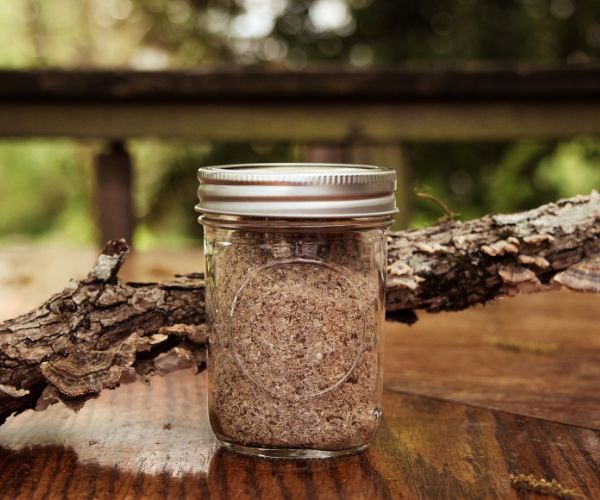
Turkey tail powder isn’t difficult to make, but it isn’t as simple as you may think. Depending on your equipment, it can take several days to complete.
Because it’s such a lengthy process, making turkey tail powder in large batches is more efficient. Once you find a good flush, responsibly harvest as much as possible. You should be able to make enough to last a month or two.
Make sure you know how to correctly identify turkey tails before harvesting.
1. Clean Your Tails
As you harvest the mushrooms, you’ll likely also harvest chunks of bark, moss, and dirt. These don’t have any extraordinary benefits, and you don’t want to use them in your powder. So, make sure to clean your shrooms.
Use a toothbrush or a damp rag to wipe debris off the shrooms, but avoid running them under water. Submerging the mushrooms will extend the time it takes to dry them thoroughly. It can also promote rot, ruining any potential for benefits.
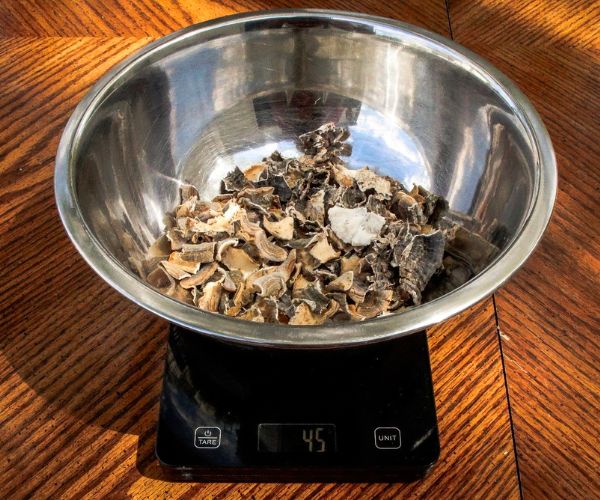
2. Cut and Dry Your Tails
Once you’ve cleaned your tails, cut them into strips or chunks with scissors. Each piece should be about the same size so they’ll dry at a similar pace. The smaller the pieces are, the faster they’ll dry.
I use cedar planks to dry my tails because this imparts a sweeter flavor. You can use a drying rack or anything else that’s convenient. Air-drying the tails takes about a week, but an oven or dehydrator can reduce that time.
- Oven method: Preheat oven to 150°F. Crack the door open so moisture can escape. Lay the mushroom pieces on a rack or cookie sheet, spacing them apart to encourage airflow. Place them inside the oven for three or four hours until they’re dehydrated and leathery.
- Dehydrator method: Arrange the mushroom pieces on your dehydrator racks with a bit of space between them. Set the dehydrator to 115°F and leave the mushrooms inside for 12–24 hours. After the 12th hour, check them every hour. Remove when brittle and leathery. How to dehydrate mushrooms instructions.
- Air-drying method: Arrange the cut shrooms on any clean surface and place them out of the way to air-dry. You can use a cookie rack to encourage airflow, but I just flip them over every once in a while. They should be ready in 6–12 days, depending on the humidity in your home.
How can you tell when your tails have dried fully? A single piece will be light and brittle. When you press the mushroom, it will bend stiffly, crack, and break.
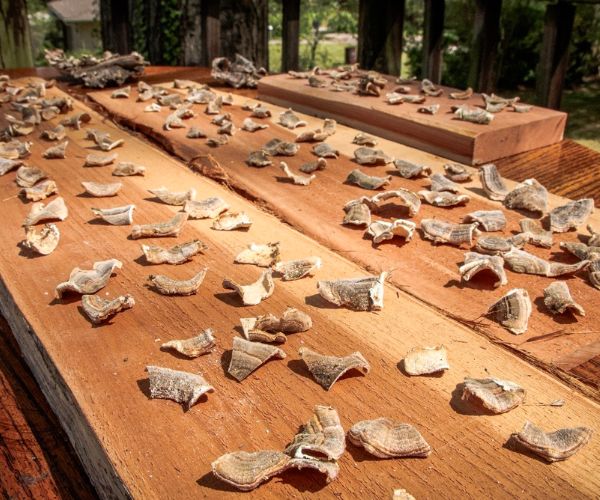
3. Process the Tails
Break out your food processor or blender, put the mushrooms in, and blitz that puppy. Ultimately, you should be left with coarse, powdery fluff.
Remember, turkey tails are tough even when they’re fresh. Once they’re dried, they become even more leathery, so blending them isn’t easy. Not all your pieces will break down entirely, and that’s fine.
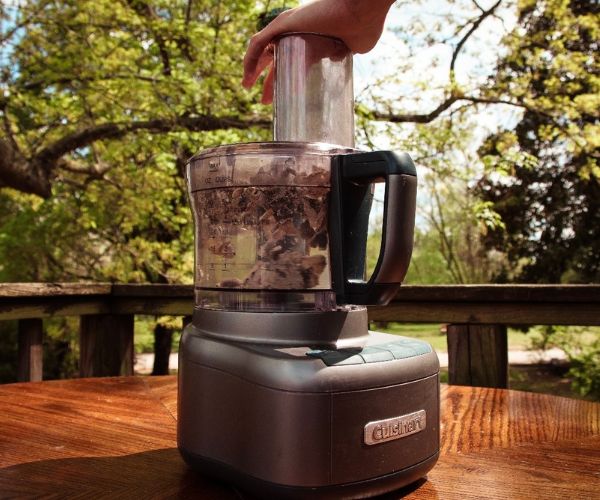
4. Simmer the Tails
Turkey tail’s beneficial compounds are trapped inside the mushroom’s rigid, fibrous cell structure. This is called chitin, and the human body cannot break down or digest it. If we eat the processed tails as they are, the benefits will pass right through us.
What’s the solution? We need to perform a hot water extraction. You may hear a lot of fancy talk in the mushroom community about alcohol extractions or dual extractions, but these are unnecessary for turkey tails.
Place the coarse mushroom powder on the bottom of a stock pot. Then, add just enough water to cover the powder and a little more to boil away. Dial up your stovetop to a low heat setting. Your water should not come to a rolling boil but a smooth simmer. You can leave the mushroom water simmering for one to two hours.
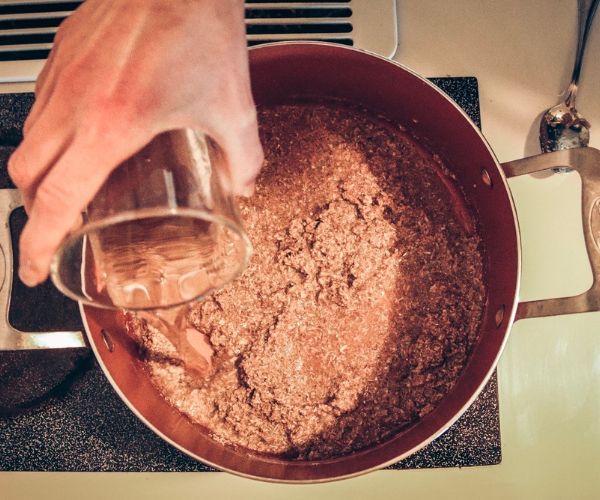
5. Reduce the Stock
Once your water has turned a lovely shade of brown and your home is filled with the earthy scent of mushrooms cooking, remove the lid from the stock pot and let the excess water evaporate.
This will probably take another hour, but timing isn’t as important as consistency. Once your mushroom “broth” has reduced into a thick sludge, it’s time to move on to the next step.
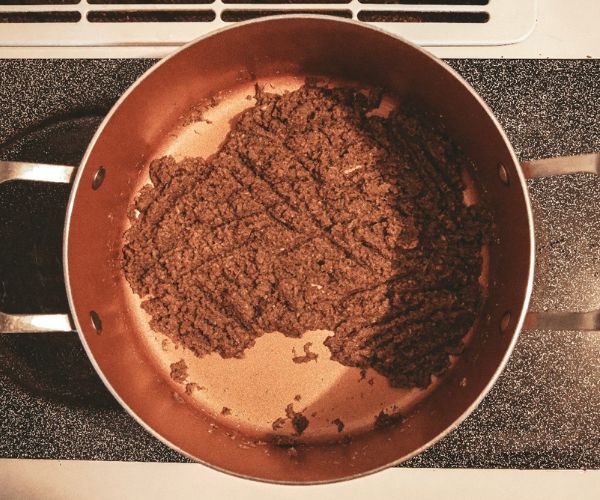
5. Dry the Extract
Turn off the heat and allow the mushroom sludge to cool down before you handle it. Once it’s cool enough, spoon it out and spread it thinly on a sheet pan.
- Oven method: Set your oven to 150°F and put the pan inside. You can crack open the oven door for moisture to escape, though this isn’t necessary if you have a convection oven. It will likely take two to three hours to dehydrate the slurry
- Dehydrator method: Spread the slurry on a solid dehydrator pan and set the dehydrator to 115°F. Dehydrating the slurry with this method will likely take four to eight hours. Once it’s dry enough, break it into chunks and put it on a rack to speed things up.
- Air-drying method: Leave the sheet pan in a warm area and wait until it’s fully dry. This can take several days and is the least effective method, but it will work if you don’t have an oven or dehydrator. If you go this route, you should break up the slurry pieces as they dry to speed things up.
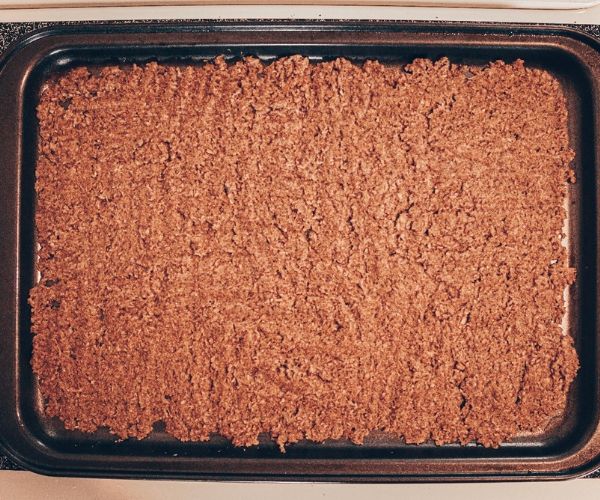
6. Crumble the Extract
You’ll need to break apart the extract to fit it in your blender. This step also allows you to check that it has dried fully. You should have a brittle, papery material that breaks apart in your hands. If it bends easily or feels damp, it needs more time to dry.
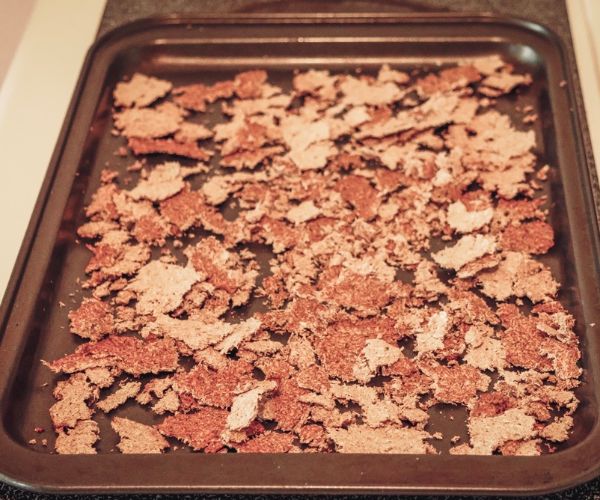
7. Powder the Extract
Once your extract is dry, it’s time to powder it for the final time. Just break up the dried slurry and put it in the blender. Take your time to blend it up properly. Completely pulverized mushrooms will be easier to store and use.
In the end, you should have a coarse powder without chunks. You can store it inside a closed mason jar in a cool, dark place for up to a year. Sprinkle it in soups, pack it into capsules, or load it into your protein smoothies to enjoy the benefits of turkey tail whenever you please.
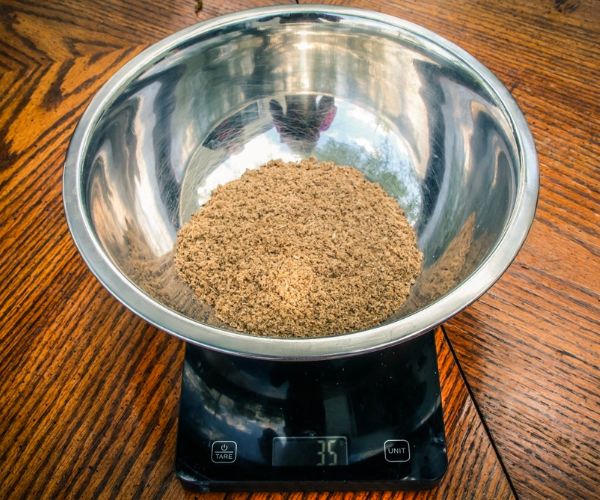
Benefits of Turkey Tail Powder
People make some really wild claims about turkey tail mushrooms, and not all of them are true. Turkey tail isn’t a magic tonic for every disease under the sun. It won’t cure disease or make you live to be 150 years old. However, there is an awe-inspiring body of scientific research showing what turkey tail can do.
It contains polysaccharide-K (PSK) and polysaccharide peptide (PSP), two compounds with impressive immunomodulating abilities. It also has protein-bound beta-glucans (PBG) with prebiotic and gut-healing potential. A wide array of antibiotic, antimicrobial, and antioxidant properties round it out into a true superfood.
How much you take matters. Clinical trials have demonstrated that doses of one to three grams daily are most effective. Taking less than this may not have any effect.
Brain Function
Turkey tail can improve brain function, reduce mental fog, and protect against age-related cognitive decline. It has been shown to act as an AChE inhibitor, indicating it has significant potential as a medication for dementia and Alzheimer’s.
Turkey tail contains the flavonoids baicalein and quercetin, which may also help stop or slow the progression of neural diseases like ALS. Baicalein and quercetin also help fight fungal and viral infections, so turkey tail may prevent and combat various other diseases.
Immune Health
PSP and PSK are demonstrably positive immunomodulatory compounds. They don’t just stimulate the immune system; they modify and help it react appropriately to a given stimulus.
In simple terms, turkey tail powder may help calm an overactive immune system and ramp up an underactive system. This means it may be appropriate for people with autoimmune disorders.
Gut Health
Turkey tail has been shown to help balance the gut microbiome during and after the use of antibiotics. The PSP and PBG in turkey tail act as a prebiotic that beneficial bacteria in the gut can feed on, helping their population remain stable over time.
There is also evidence to suggest that turkey tail may help in weight management. It promotes the population of a diverse range of microbes that aid in digestion and metabolism. One animal study suggested it prevented excessive weight gain in rats eating a high-fat diet, while another suggested it boosted athletic performance and helped stabilize blood sugar levels.
It’s important to read the science behind any supplement you want to take. That way, you can go in with the right expectations. Since turkey tail is one of the most widely studied mushrooms in the world, it’s easy to see just how much good it can do.
If you’re ready to hop on this health-boosting bandwagon, head out to the forest and forage some today.


I tend to boil and simmer them whole. Then dry and poweder them. Is this as good as your method or am I missing out on benefits.
Will it stick to the pan. I saw another site say to spray the pan first, but I thought that would taint the turkey tail.
Hi Kim, that’s a great question!
I wouldn’t recommend spraying the pan, since oily residue will remain on the mushrooms. The powder won’t stick to the pan, since the heat is turned on low. Plus, as the moisture evaporates, there isn’t anything inherently sticky left.
If you are worried, you could always use parchment paper, too.